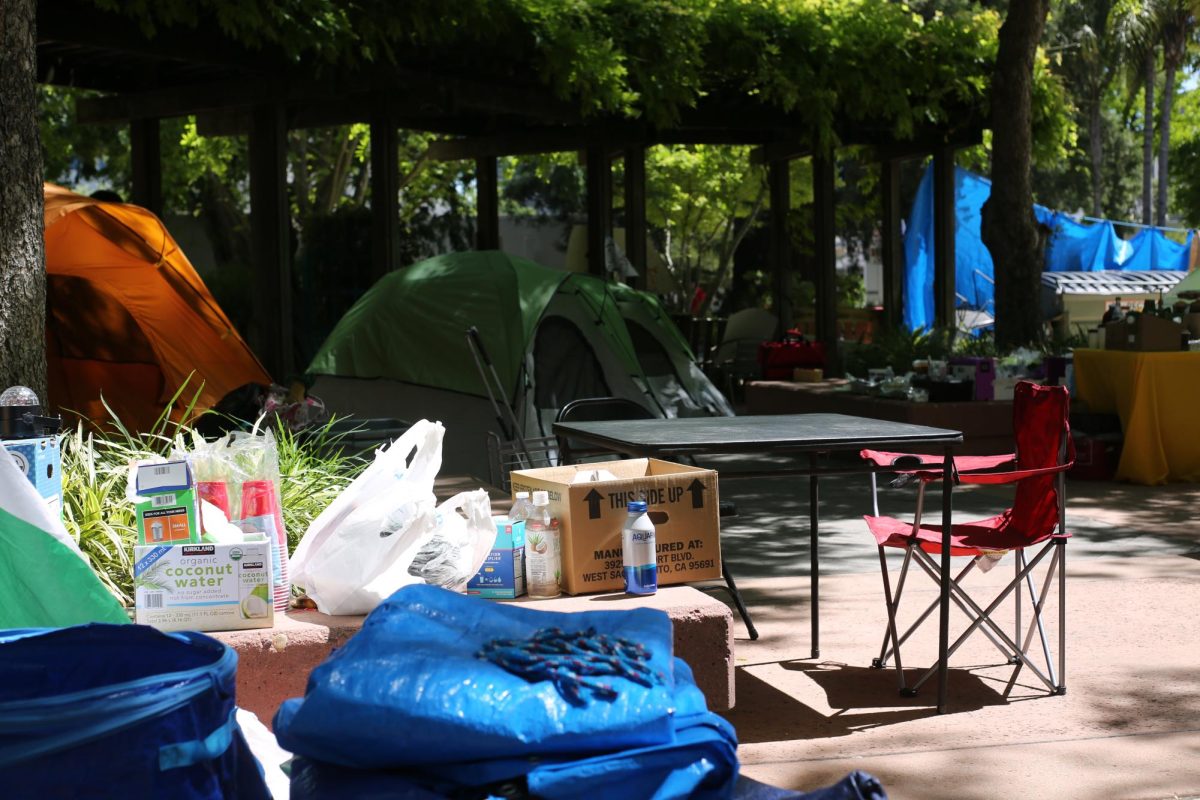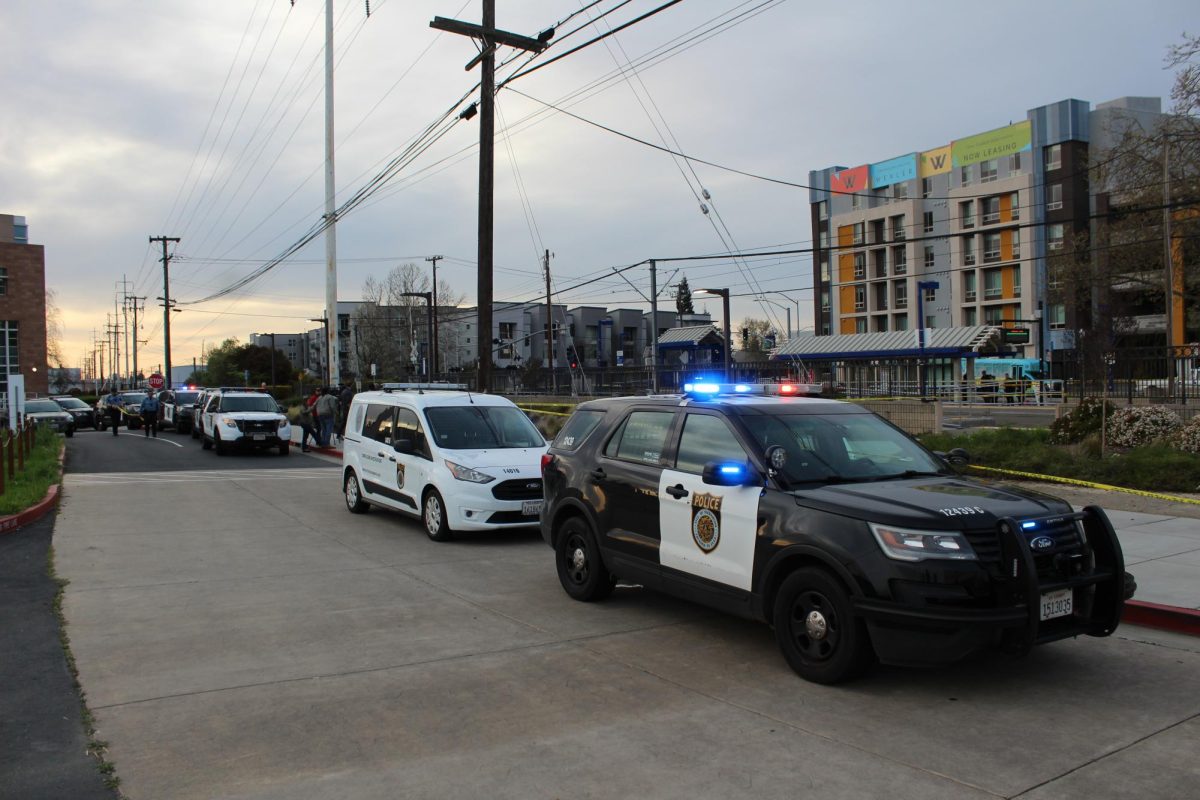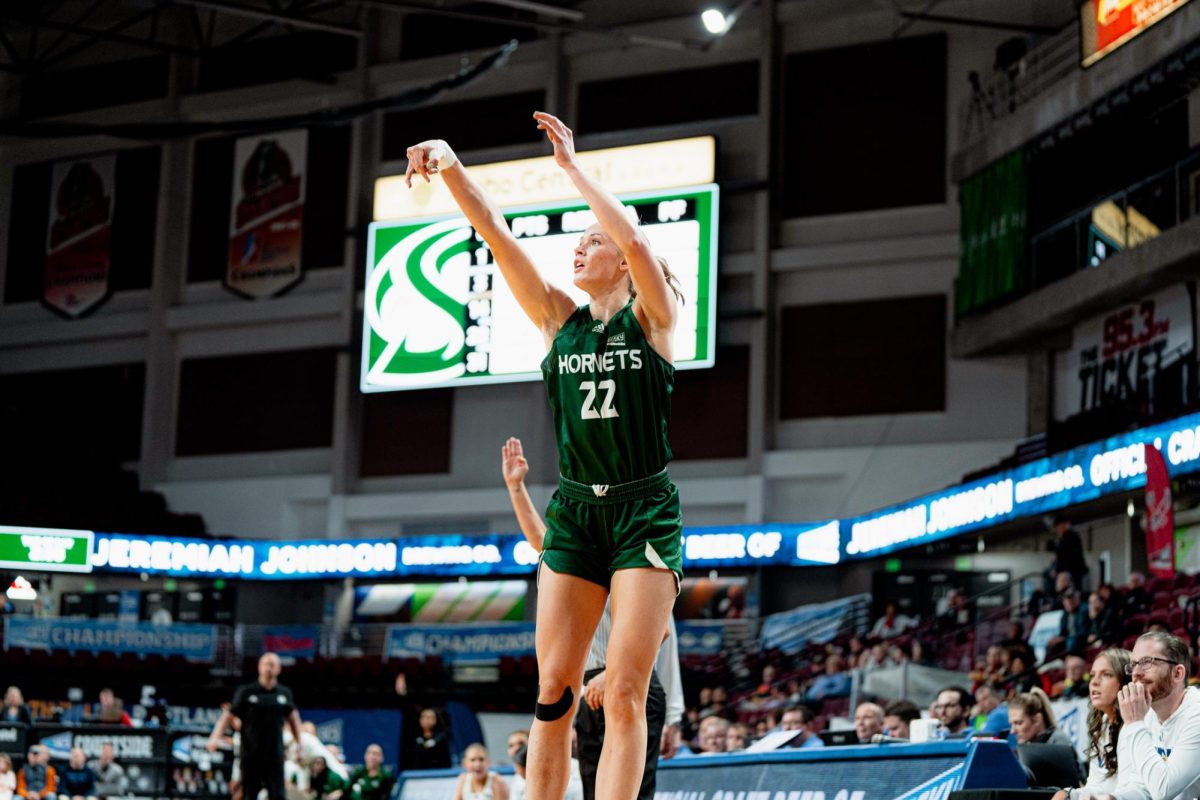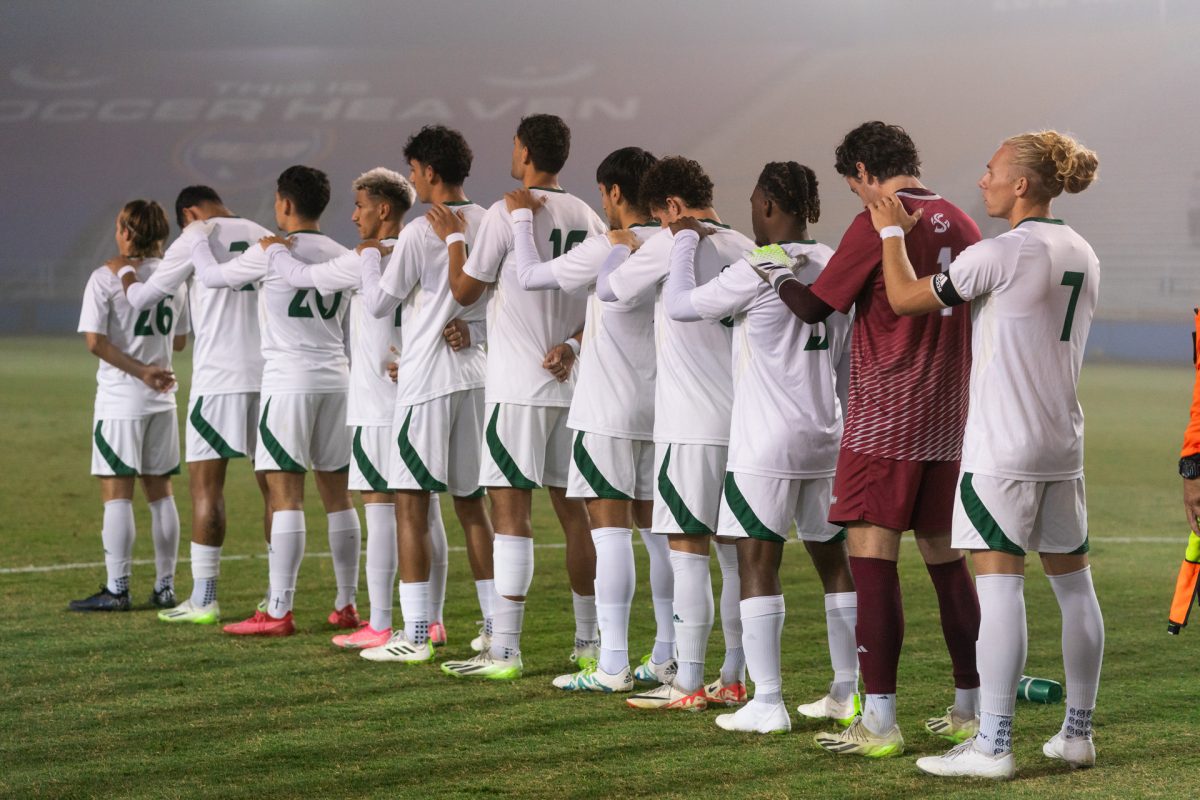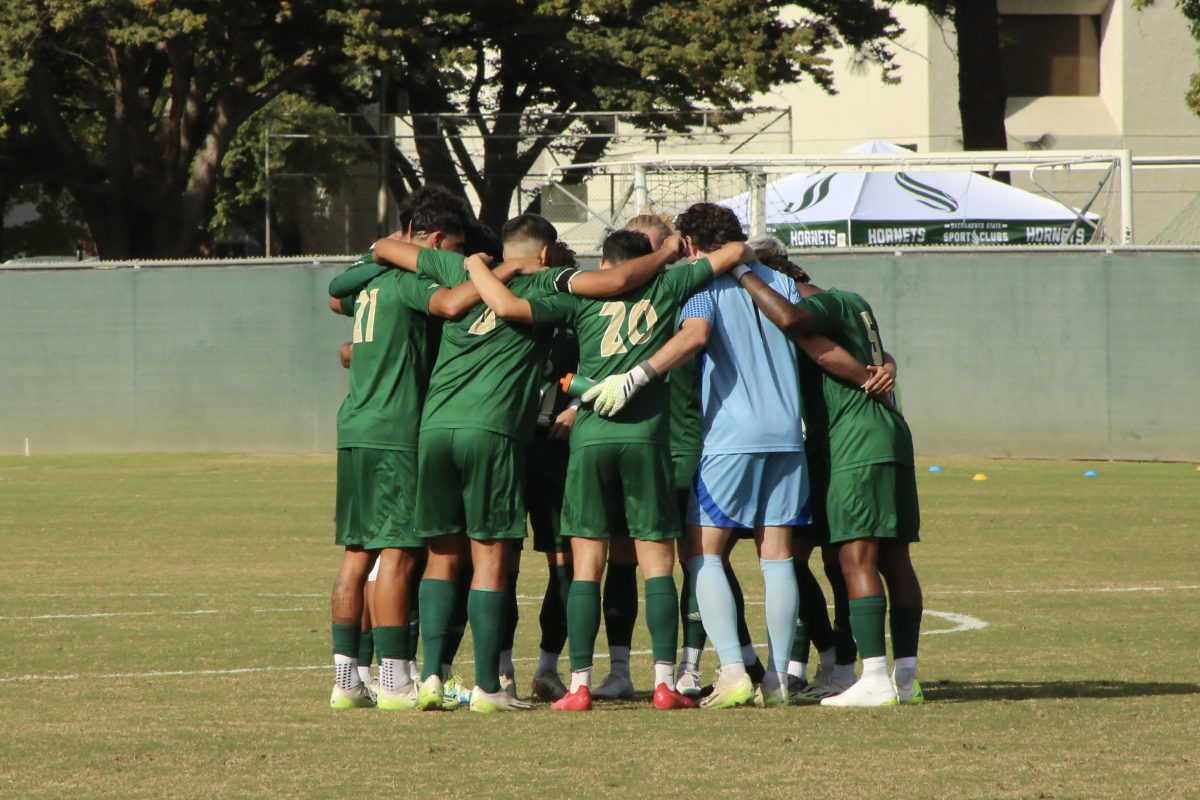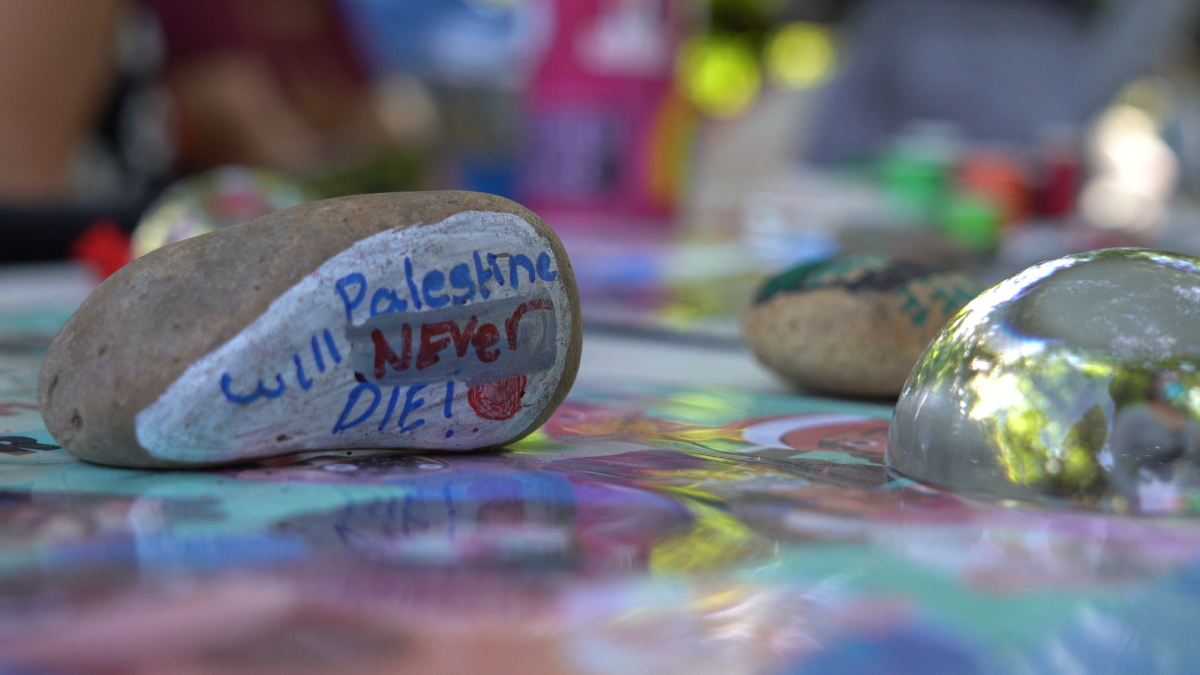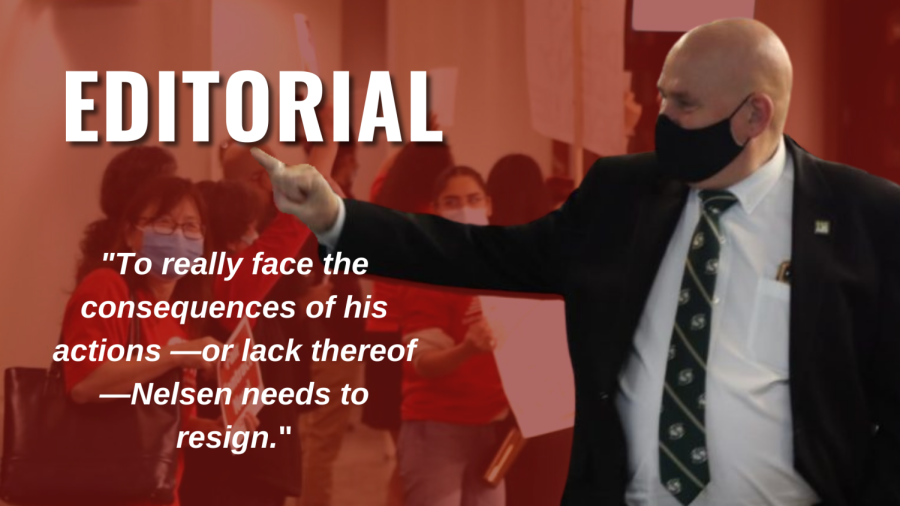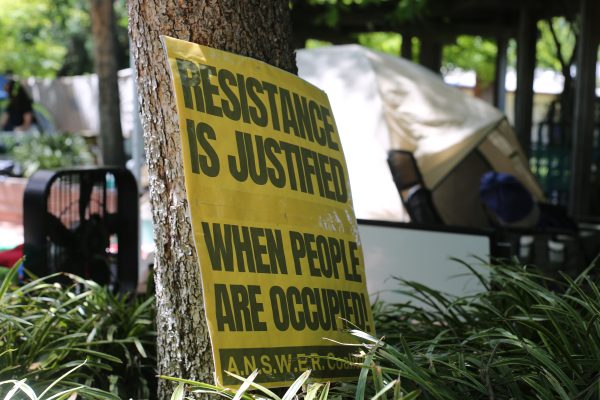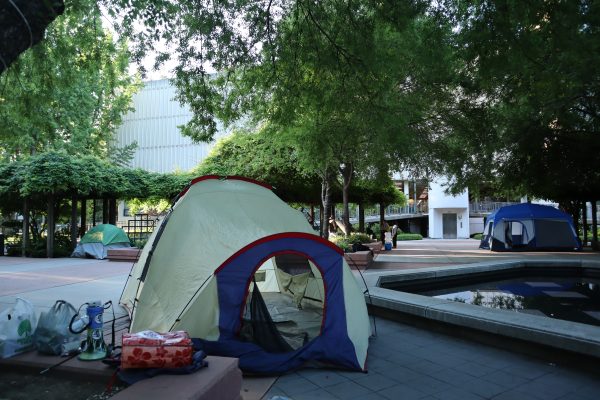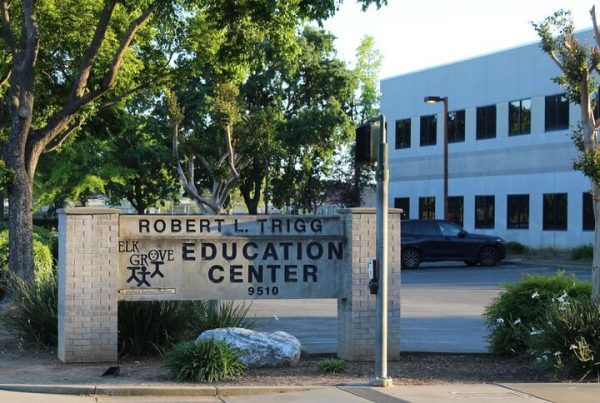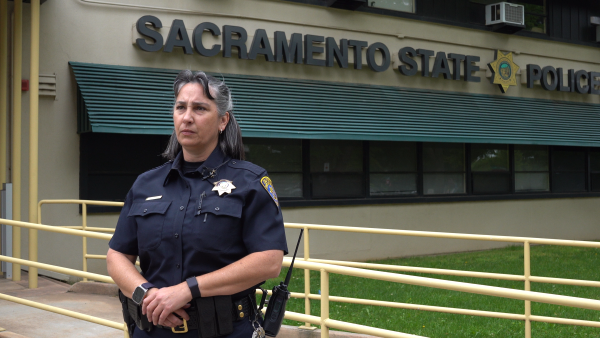If you ain’t first, you’re last
May 16, 2007
Maybe you’ve heard the crackle of a welder, or the metallic sound of a hammer on metal as you walked by Santa Clara Hall on the way to the University Union. Or maybe you were the one who called the police when a few Sacramento State students took their Formula SAE racecar on a test run past the University Union.
More likely, you have no idea that a handful of Sac State students are working hard to finish their vehicles before participating in competitions composed of similar teams from schools all over the nation and even some foreign countries.
Though most students working on the vehicles come from the Engineering Department, the club is open to anyone, from any major, and no experience is necessary.
“This is one of the most prestigious design competitions in the world,” said Cory Cowden, president of the Formula SAE club. He said that at a previous event, a General Motors representative said that one year in this program is like working two years in the real world.
“It’s a great hands-on experience,” said Associate Professor Aki Kumagai, the program’s faculty adviser. “It’s a very important factor in (looking for) a job because these students went one step further.”
He also said students get experience not just in engineering and construction skills, but learn how to contact companies to get sponsorships and how to work as a team. Kumagai likened this program, which he said is a great recruiting tool for Sac State, to having an exciting football or basketball team.
When asked if the club had a rival, several members shouted out, “UC Davis!”
Like any team, both the Formula and Mini Baja had to start somewhere. What was only a pile of tubes and miscellaneous parts during Winter Break is now an almost-complete Mini Baja racing vehicle. The engine, a Briggs and Stratton 10-horsepower donated by the company, is the only part the students had no input on and is universal for the competition. The only other regulations, such as width and space for the driver, are for safety reasons.
“It’s a collegiate design series,” said Bryan Bennett, junior mechanical engineering major and president of the Mini Baja project. “Teams all across the world build a car and go to the competition.”
The competition, hosted by the Society of Automotive Engineers (SAE), consists of both static and dynamic tests. The Formula competition will be held June 13-16 in Fontana, Calif. and will have about 80 teams. The Mini Baja competition will take place in South Dakota from May 23-26, which happens to be finals week. Fortunately, the teachers are willing to work around the club’s schedule. There are 125 teams expected to enter.
The static tests for the Mini Baja include things such as the overall design, cost and a presentation. The dynamic tests include rock-climbing, a log-pull and a four-hour endurance race.
“The whole idea is to build something you could sell to an average guy as a durable off-road vehicle,” said Ken Moitoza II, senior mechanical engineering major and vice president of the Mini Baja Club.
While senior mechanical engineering major and Vice President/Treasurer of the Mini Baja Tim Hagen described the Mini Baja as a “rock-crawler” and an “off-road monstrosity,” the Formula car resembles a sleek, Indy-style racecar.
The car uses a four-cylinder, 600cc motorcycle engine. Just like the Mini Baja, most of the rules are for safety. The idea for this year’s design is to keep it “simple and reliable,” Cowden said.
The static contests with the Formula car are similar to the Mini Baja and include overall design, cost and presentation. The dynamic contests are slightly different. While there is still an endurance race, there is also an autocross course, which requires the driver to negotiate a course as fast as possible, and a skid pad, to judge how well the car does when traction is at a minimum.
Both clubs have been around since the early 1990s, but have run into difficulty recently. Last year, the Formula car was not finished in time to compete, so it served as a foundation for this year’s car.
The Mini Baja went to the competition last year, but could not compete because the vehicle was disqualified on a few technicalities, Bennett said.
To keep the same thing from happening again this year, Bennett said everyone is working hard and testing more, and the rulebook is consulted before any parts are put on.
Even though the two teams are technically two separate clubs, members help out with both vehicles and share expertise, ideas and tools.
Some tools are available for use in the shop, which belongs to the Engineering Department, but other tools need to be purchased, and there is usually not enough money to go around.
Both clubs get money from grants, Associated Students Inc., University Enterprises, the Engineering Joint Council and sponsors. The Mini Baja, for example, got tires for half price from a sponsor. Unfortunately, if a tool breaks and there is no money to buy a new one, the students either have to improvise or find another way.
Kumagai said this is a common problem with most schools, since the engineering departments typically don’t fund the programs. Some private colleges receive large donations and have an edge in that respect.
The Mini Baja car this year cost about $6,500 before travel expenses, Hagen said. Members estimated that a vehicle built to the same specifications would retail for about $20,000.
Even with all the prestige associated with the program, most of the students involved aren’t in it as a resume-builder.
“It’s exciting,” said junior mechanical engineering major John Murray. “I strive toward driving (the car).”
“It’s fun,” Bennett said.
“I don’t know,” Moitoza said with a laugh when asked why he does it. “Since last semester, I’ve spent about 10-15 hours a week. Bryan (Bennett) puts in easily that much, if not more.”
Murray agreed that balancing school and working on the cars is tough. There were around 40 students working on the Formula car at the beginning, but the number is down to about 13 now. The Mini Baja started with five and lost one, but picked up Moitoza partway through.
They attribute the loss of some students to busy schedules.
“People look at it as real-world experience,” Moitoza said. And just like real-world experience, a lot of time is needed.
Hagen has built go-karts and enjoys fabricating things. “It’s a mental challenge. I just like the fun of building it,” he said.
The Mini Baja will be drivable in almost a week. When it is ready, the club will take it to Moitoza’s house in Wilton, near Elk Grove, to practice for the events in the competition.
The Mini Baja has some features which the club members think will be unique for the competition, such as a forward-mounted engine, four-wheel drive and reverse.
The Formula car is currently undergoing testing to make sure all the bugs are worked out prior to the competition. Even though some parts are cannibalized from the previous car, they will be remade and replaced so both cars will be operable.
Each event will have two drivers. They will be selected by determining who is the best at each event during testing.
“Everyone will get a chance to drive it. They all worked on it,” Cowden said.
To contact the club, either log onto the website at gaia.ecs.csus.edu/~formula or drop by Santa Clara 1353 on Mondays at 6 p.m. Brandon Darnell can be reached at [email protected]




